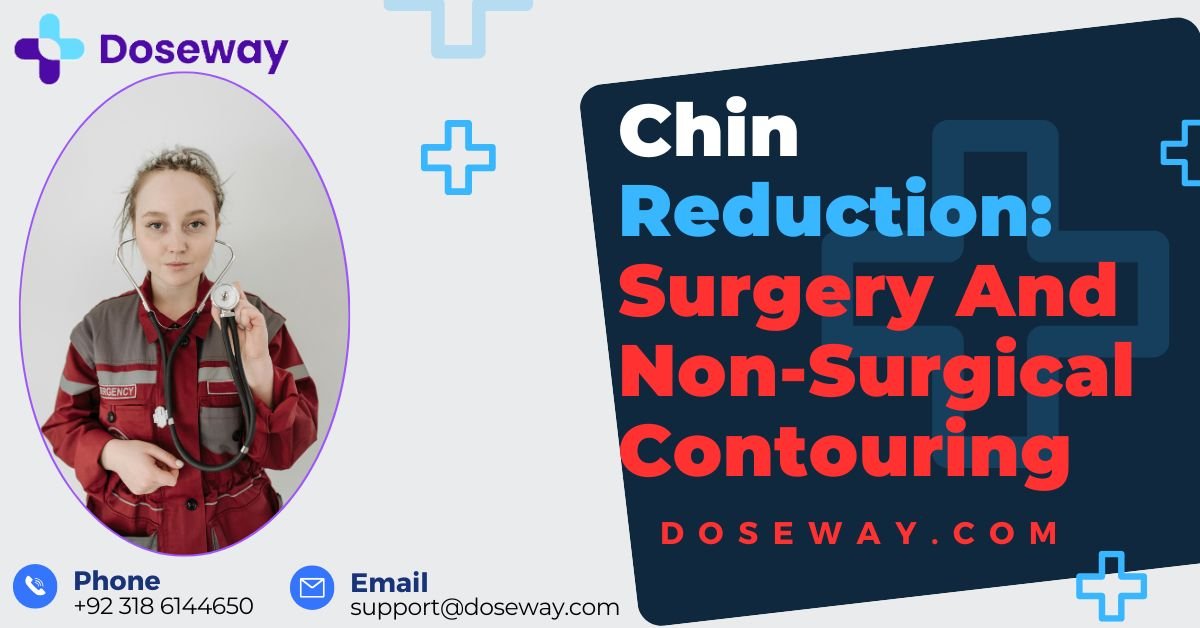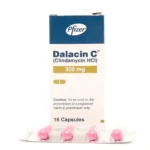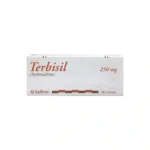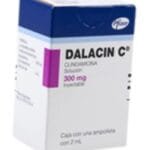Chin reduction and contouring procedures represent some of the most transformative facial aesthetic treatments available today. Whether through surgical intervention or non-surgical techniques, these procedures address concerns related to chin prominence, shape, and overall facial balance. This comprehensive guide explores every aspect of chin reduction, from traditional surgical methods to innovative non-surgical alternatives, providing you with the essential information needed to make an informed decision about enhancing your facial profile.
✓ Definitive guide to surgical and non-surgical chin reduction options
✓ Expert insights on procedure selection based on individual facial anatomy
✓ Comprehensive cost analysis and recovery timeline expectations
✓ Risk assessment framework for evaluating surgical candidacy
✓ Advanced techniques in facial contouring and harmony principles
Chin Reduction Calculator
Assess cost, risks, and recovery timeline for chin reduction procedures
Read More Guides & Try More Free Tools:
- Try our Bodytite Cost: RFAL Skin Tightening Price Guide
- Try our Lip Filler Prices Near Me: Juvederm vs. Restylane
- Try our Fat Transfer Cost: BBL, Face, And Breast Prices

Table Of Contents
What Is Chin Reduction Surgery and How Does It Work?
Chin reduction surgery, medically known as reduction genioplasty or mentoplasty, is a cosmetic surgical procedure designed to decrease the size or projection of an overly prominent chin. This orthopedic facial surgery involves carefully reshaping the chin bone to create better facial proportion and balance. The procedure addresses various concerns including disproportionately large chins, square chin contours, chin asymmetry, and excessive chin projection that disrupts natural facial harmony.
The fundamental principle behind chin reduction surgery revolves around facial balance and the golden ratio—the mathematical proportion that defines aesthetic beauty in human faces. When the chin dominates the facial landscape, it can make other features appear smaller or unbalanced. Chin reduction surgery aims to create harmony between all facial features, particularly ensuring proper balance between the chin, nose, cheeks, and forehead.
Key Aspects of Chin Reduction Surgery:
✓ Bone reshaping through precise surgical techniques
✓ Soft tissue adjustment to complement new bone structure
✓ Facial symmetry enhancement through measured reductions
✓ Natural-looking results that maintain individual character
✓ Customized approach based on unique facial anatomy
Who Is an Ideal Candidate for Chin Reduction Procedures?
Ideal candidates for chin reduction surgery typically present with specific anatomical characteristics and personal circumstances that make them well-suited for the procedure. Understanding these candidacy criteria helps individuals determine whether chin reduction aligns with their needs and expectations. The perfect candidate generally exhibits physical traits that indicate potential for significant improvement through chin reduction while maintaining overall health status that supports safe surgical recovery.
Physical characteristics of ideal candidates include having a disproportionately large or prominent chin that disrupts facial harmony. This might manifest as a chin that extends too far forward (excessive projection), appears too wide from frontal view, or has an square, masculine shape that the patient wishes to soften. Additionally, candidates should have good bone density and quality to support the healing process and maintain structural integrity after reduction.
Candidate Evaluation Factors:
✓ Facial disproportion caused by chin prominence
✓ Good overall health without uncontrolled medical conditions
✓ Realistic expectations about surgical outcomes
✓ Non-smoker status or willingness to quit before and after surgery
✓ Complete facial skeletal development (typically age 18+)
✓ Psychological readiness for cosmetic procedure recovery
What Are the Different Types of Surgical Chin Reduction Methods?

Surgical chin reduction encompasses several specialized techniques, each designed to address specific anatomical concerns and achieve particular aesthetic outcomes. The choice of surgical method depends on multiple factors including the chin’s current structure, the desired contour, the surgeon’s expertise, and the patient’s unique facial characteristics. Understanding these different approaches helps patients make informed decisions about their surgical options.
The most common surgical techniques include sliding genioplasty, chin reduction osteotomy, burring reduction genioplasty, and wedge resection genioplasty. Each method offers distinct advantages for particular chin types and patient goals. Sliding genioplasty involves making precise cuts in the chin bone and repositioning it backward or reducing its height. Chin reduction osteotomy focuses on removing a section of the chin bone to decrease projection, while burring techniques use specialized instruments to carefully shave down prominent areas of the chin bone.
Comprehensive Surgical Technique Breakdown:
Sliding Genioplasty
This advanced technique involves making horizontal cuts in the chin bone and sliding the central portion backward to reduce projection. The procedure allows for precise control over the new chin position and can simultaneously address chin height concerns. Surgeons often prefer this method for its versatility and natural-looking results.
Reduction Osteotomy
This bone-cutting procedure removes a wedge-shaped section of the chin bone to decrease its forward projection. The technique is particularly effective for significantly prominent chins that require substantial reduction. The procedure requires precise planning to maintain chin symmetry and natural contour.
Burring Reduction Genioplasty
Using specialized surgical burrs, surgeons carefully shave down the outer surface of the chin bone to create a more refined contour. This method works well for mild to moderate chin reduction and offers the advantage of minimal bone disruption. The technique allows for subtle, artistic reshaping of the chin.
Wedge Resection Genioplasty
This technique involves removing a V-shaped section from the center of the chin bone to narrow a wide chin while maintaining natural-looking contours. The method effectively addresses chin width concerns without significantly affecting projection.
How Does Non-Surgical Chin Contouring Compare to Traditional Surgery?
Non-surgical chin contouring has emerged as a popular alternative to traditional surgical methods, offering significant aesthetic improvements without the extensive downtime and risks associated with surgery. These innovative techniques utilize injectables, energy-based devices, and other minimally invasive approaches to reshape the chin area and improve facial harmony. While non-surgical options cannot achieve the same degree of change as orthopedic surgery, they provide meaningful improvements for suitable candidates.
The fundamental difference between surgical and non-surgical approaches lies in their mechanism of action. Surgical methods physically reshape the chin bone, while non-surgical techniques primarily work by modifying the soft tissue contours around the chin or using injectables to balance facial proportions. Non-surgical contouring can create the visual illusion of a smaller chin by enhancing surrounding features rather than directly reducing chin size.
Non-Surgical Contouring Methods:
Injectable Treatments
Dermal fillers strategically placed along the jawline, cheeks, and nose can create better facial balance, making a prominent chin appear less dominant. Neuromodulators like Botox can reduce the appearance of a prominent mentalis muscle, softening chin projection.
Energy-Based Devices
Radiofrequency and ultrasound technologies can tighten skin and reduce fat in the chin and neck area, creating a more refined contour. These treatments work well for patients with good bone structure but excess soft tissue in the chin region.
Fat Reduction Injections
Injectable solutions that target and eliminate fat cells can reduce submental fullness that contributes to chin prominence. These treatments require multiple sessions but offer permanent fat reduction in the treated areas.
What Determines Chin Reduction Surgery Cost and Pricing Factors?
Chin reduction surgery costs vary significantly based on multiple factors that influence the complexity, duration, and resources required for the procedure. Understanding these cost determinants helps patients budget appropriately and make informed decisions about their surgical investment. The total expense typically includes surgeon’s fees, anesthesia costs, facility fees, pre-operative tests, post-operative garments, medications, and follow-up care.
Geographic location represents one of the most significant cost factors, with procedures in major metropolitan areas typically costing more than those in smaller cities or rural areas. The surgeon’s expertise and reputation also substantially impact pricing, with board-certified plastic surgeons and recognized specialists commanding higher fees due to their advanced training and proven results. Procedure complexity similarly affects cost, as more extensive bone work requires additional surgical time and expertise.
Comprehensive Cost Breakdown Table:
| Cost Component | Price Range | Factors Affecting Cost |
|---|---|---|
| Surgeon’s Fee | $3,000 – $8,000 | Experience, certification, demand |
| Anesthesia | $800 – $1,500 | Procedure length, anesthesiologist vs. nurse |
| Facility Fees | $1,200 – $2,500 | Hospital vs. surgical center, location |
| Pre-operative Tests | $200 – $800 | Patient health status, required screenings |
| Post-operative Care | $300 – $1,000 | Garments, medications, follow-up visits |
| Revision Surgery | $0 – $5,000 | Insurance coverage, complexity of revision |
What Are the Potential Risks and Complications of Chin Reduction?
Like all surgical procedures, chin reduction surgery carries inherent risks and potential complications that patients must understand before consenting to treatment. While serious complications are relatively rare, especially when performed by experienced surgeons, all surgical candidates should be aware of these possibilities and discuss them thoroughly with their surgeon. Understanding these risks enables patients to make informed decisions and take appropriate precautions to minimize potential complications.
Common risks include standard surgical complications such as infection, bleeding, adverse reactions to anesthesia, and scarring. Specific to chin reduction surgery, patients may experience temporary or permanent numbness in the chin and lower lip area due to nerve disturbance during the procedure. Asymmetry represents another potential complication, where the chin heals in an uneven position or with irregular contours. Bone healing issues, while uncommon, can occur and may require additional intervention.
Risk Mitigation Strategies:
Choosing an Experienced Surgeon
Selecting a board-certified plastic surgeon or maxillofacial specialist with extensive chin surgery experience significantly reduces complication risks. Review before-and-after photos of previous patients and verify credentials.
Proper Pre-operative Preparation
Following all pre-surgical instructions regarding medication restrictions, smoking cessation, and health optimization creates better conditions for successful surgery and healing.
Adherence to Post-operative Protocols
Meticulously following all recovery instructions regarding activity restrictions, wound care, and medication schedules promotes optimal healing and reduces complication risks.
What Does the Chin Reduction Recovery Process Entail?
The chin reduction recovery process involves multiple phases, each with specific healing milestones and care requirements. Understanding this recovery timeline helps patients prepare appropriately for their post-operative experience and set realistic expectations about the healing journey. While recovery varies among individuals based on factors like surgical extent, personal healing capacity, and adherence to post-operative instructions, most patients follow a general recovery pattern.
During the initial 48 hours following surgery, patients typically experience the most significant swelling, bruising, and discomfort. Pain medication manages discomfort, while cold compresses help control swelling. A compression garment is often worn during this phase to support the healing tissues and minimize edema. Most patients take approximately one week off work, though those with physically demanding jobs may require additional recovery time.
Detailed Recovery Timeline:
Week 1-2: Initial Healing Phase
Significant swelling and bruising peak around day 3-4 then gradually improve
Liquid or soft food diet to minimize chin movement
Strict head elevation during sleep to reduce swelling
Suture removal typically occurs around day 7-10
Week 3-6: Intermediate Recovery
Swelling continues to diminish, though some residual swelling remains
Gradual return to normal activities and exercise
Numbness in chin and lower lip may persist
Final contours begin to emerge as swelling resolves
Month 2-6: Final Results
Most swelling resolves, revealing final chin shape
Numbness typically resolves completely
Final surgical outcome becomes apparent
Scar maturation continues

How Does Our Chin Reduction Calculator Work?
Our chin reduction calculator represents an advanced digital tool designed to provide personalized estimates regarding surgical suitability, potential costs, risk assessment, and recovery expectations. This sophisticated algorithm processes multiple data points to generate customized information that helps individuals understand their potential chin reduction journey. The calculator incorporates medical guidelines, surgical outcome data, and cost information to deliver comprehensive preoperative insights.
The calculator functions by analyzing several categories of input data, including demographic information, medical history, anatomical characteristics, and procedural preferences. Each data point contributes to a multidimensional assessment that generates personalized outputs. The system weighs factors according to their clinical significance, with medical conditions and anatomical factors carrying greater weight in risk assessment than demographic information in most cases.
Calculator Input Categories and Their Significance:
Demographic Data
Age, gender, height, and weight provide baseline information about physiological status and healing capacity. These factors influence risk assessment and recovery timeline predictions.
Medical History
Current health conditions, medications, allergies, and health behaviors significantly impact surgical risk profiles and potential complication rates. This information helps identify candidates who may require additional medical clearance or specialized surgical approaches.
Anatomical Factors
Chin structure, skin quality, and facial proportions determine surgical complexity and technique recommendations. These factors directly influence procedural planning and outcome predictions.
Procedural Preferences
Desired chin shape, surgical approach preferences, and budget considerations help align expectations with realistic outcomes and financial planning.
Understanding Your Chin Reduction Calculator Results
The chin reduction calculator generates several key metrics that help patients understand their surgical profile and make informed decisions. These results include a suitability score, risk assessment, cost estimate, and recovery timeline projection. Each component provides valuable information that contributes to a comprehensive understanding of the individual’s chin reduction potential.
The suitability score represents a numerical value between 1-10 that indicates how well the individual’s profile matches ideal candidate characteristics. Scores above 7.5 typically indicate excellent candidacy with predictable outcomes and standard risk profiles. Scores between 5-7.5 suggest good candidacy with some modifying factors that might require special consideration. Scores below 5 indicate that chin reduction may present higher risks or less predictable outcomes, warranting thorough discussion with a qualified surgeon.
Interpreting Risk Assessment Results:
Low Risk Profile
Individuals with low risk profiles typically have no significant medical conditions, healthy lifestyle behaviors, favorable anatomical characteristics, and age under 50. These candidates generally experience standard recovery timelines with minimal complication risks.
Moderate Risk Profile
Moderate risk candidates may have well-controlled medical conditions, mild tobacco use history, or anatomical factors that increase surgical complexity. These patients require careful preoperative optimization but generally achieve good surgical outcomes.
High Risk Profile
High risk candidates typically present with multiple medical comorbidities, significant smoking history, poor skin quality, or complex anatomical considerations. These individuals require comprehensive medical evaluation and specialized surgical planning to optimize safety.

What Are the Key Factors That Influence Chin Reduction Outcomes?
Multiple factors significantly influence chin reduction surgical outcomes, understanding which helps patients and surgeons optimize results. These factors include anatomical considerations, surgical technique selection, surgeon expertise, patient compliance with postoperative instructions, and individual healing characteristics. Each element contributes to the final aesthetic result and functional outcome.
Bone structure and density represent crucial anatomical factors that directly impact surgical planning and eventual outcomes. Patients with strong, well-defined chin bones typically achieve more predictable results with standard techniques, while those with delicate bone structure or asymmetries may require customized surgical approaches. Soft tissue characteristics including skin thickness, elasticity, and fat distribution similarly influence final contours and healing.
Critical Success Factors:
Surgical Precision
Accurate bone cuts, careful tissue handling, and symmetrical reduction techniques form the foundation of successful outcomes. Meticulous surgical execution minimizes complications and enhances aesthetic results.
Proper Wound Healing
Optimal healing requires appropriate postoperative care, nutrition, and activity modification. Patients who closely follow recovery protocols typically experience better outcomes with reduced complication rates.
Realistic Expectations
Understanding the limitations and possibilities of chin reduction surgery helps patients achieve satisfaction with their results. Comprehensive preoperative discussion aligns patient expectations with surgical reality.
How to Choose the Right Surgeon for Chin Reduction Surgery?
Selecting the appropriate surgeon represents one of the most critical decisions in the chin reduction process, directly influencing safety, outcomes, and overall experience. The ideal chin reduction surgeon possesses specific qualifications, experience, and approach characteristics that optimize surgical success. Patients should conduct thorough research and multiple consultations before making this important decision.
Board certification in plastic surgery or oral and maxillofacial surgery provides the fundamental foundation for surgical expertise. These certifications indicate completion of rigorous training specifically relevant to facial bone surgery. Beyond basic credentials, surgeons who regularly perform chin reduction procedures develop refined techniques and problem-solving abilities that enhance outcomes. Reviewing before-and-after photos of previous patients provides visual evidence of a surgeon’s aesthetic approach and technical skill.
Surgeon Selection Criteria:
Specialized Training
Seek surgeons with fellowship training in facial plastic surgery or craniofacial surgery, as these specialists possess advanced skills in facial bone modification techniques.
Procedure Volume
Surgeons who perform chin reduction regularly typically achieve more consistent results and manage complications more effectively than those who perform the procedure occasionally.
Communication Style
Choose a surgeon who listens carefully, explains concepts clearly, and demonstrates understanding of your aesthetic goals. Effective communication ensures aligned expectations.
Surgical Facility Accreditation
Verify that the surgical facility holds appropriate accreditation, indicating adherence to strict safety standards and equipment requirements.

What Are the Latest Advancements in Chin Reduction Techniques?
Chin reduction techniques continue to evolve with technological advancements and improved understanding of facial anatomy. Recent innovations focus on enhancing precision, reducing recovery time, minimizing scarring, and improving predictability of outcomes. These advancements benefit patients through safer procedures and more consistent results.
Computer-assisted surgical planning represents one of the most significant recent advancements in chin reduction surgery. Using 3D CT scans and specialized software, surgeons can virtually plan the procedure with millimeter precision, creating custom surgical guides that translate the digital plan to the operating room. This technology enables unprecedented accuracy in bone reduction and positioning, particularly valuable for asymmetric cases or complex revisions.
Emerging Technological Innovations:
3D Printing Technology
Patient-specific surgical guides and implants created through 3D printing allow for customized approaches that match individual anatomy precisely. These guides improve surgical accuracy and efficiency.
Enhanced Recovery Protocols
Multimodal pain management strategies and specialized postoperative care pathways reduce discomfort and accelerate return to normal activities. These protocols represent significant advances in patient experience.
Minimally Invasive Approaches
Endoscopic techniques and smaller incisions reduce tissue trauma and improve recovery experiences while maintaining surgical efficacy. These approaches continue to evolve and expand.
How Does Chin Reduction Impact Overall Facial Harmony?
Chin reduction surgery influences overall facial harmony through its effect on facial proportion balance and aesthetic lines. The chin serves as a foundational element in facial composition, with its position and shape affecting the perception of other features. Properly performed chin reduction enhances facial balance by creating better proportion between the upper, middle, and lower facial thirds.
Facial aesthetic analysis identifies several key relationships that define facial harmony, many of which involve the chin. The Ricketts’ E-line, which connects the tip of the nose to the chin, should gently touch both structures in well-balanced profiles. Chin reduction adjusts this relationship by moving the chin point backward to achieve ideal nasal-chin balance. Similarly, the lower facial third height—measured from the base of the nose to the chin—should equal the middle facial third height in balanced faces.
Facial Harmony Principles:
Vertical Proportion Balance
Ideal facial height divides into equal thirds: hairline to brow, brow to nose base, and nose base to chin. Chin reduction addresses lower third discrepancies.
Horizontal Balance
Chin width should approximate the width of the nose and align with vertical lines drawn through the pupils. Reduction genioplasty can improve these relationships.
Profile Alignment
Multiple aesthetic lines including the Frankfort horizontal plane and various profile lines determine optimal chin position. Chin reduction corrects deviations from these ideals.
What Non-Surgical Alternatives Exist for Chin Reduction?
Non-surgical chin contouring alternatives provide meaningful improvement for patients seeking chin enhancement without surgery or those with mild to moderate concerns that don’t warrant surgical intervention. These techniques utilize injectables, energy-based devices, and other minimally invasive approaches to create the visual effect of a more balanced chin and improved facial harmony. While non-surgical options cannot reduce bone prominence, they can significantly improve chin appearance through alternative mechanisms.
Dermal fillers represent the most versatile non-surgical approach to chin balancing. Strategic filler placement in adjacent areas can create better facial proportion, making a prominent chin appear less dominant. Fillers in the cheeks, jawline, and prejowl areas can balance chin projection visually. Neuromodulators like Botox can soften a prominent mentalis muscle, reducing chin projection caused by muscle hyperactivity rather than bone structure.
Comprehensive Non-Surgical Options:
Dermal Filler Balancing
Hyaluronic acid fillers placed along the jawline and cheeks create structural balance that minimizes chin prominence appearance. This approach works well for mildly prominent chins.
Radiofrequency Skin Tightening
Energy-based devices that stimulate collagen production and tighten skin can improve chin definition and reduce the appearance of soft tissue fullness in the chin area.
Deoxycholic Acid Injections
These injections target and destroy fat cells beneath the chin, reducing submental fullness that can contribute to chin prominence appearance. Multiple treatments typically required.

Frequently Asked Questions About Chin Reduction
What is the difference between chin reduction and chin augmentation?
Chin reduction decreases chin size and projection, while chin augmentation enhances chin prominence using implants or advancing the chin bone. Reduction procedures address overly prominent chins, while augmentation helps weak or receding chins. The procedures represent opposite approaches to chin modification based on individual facial balance needs.
Can chin reduction be combined with other facial procedures?
Yes, chin reduction is frequently combined with rhinoplasty, facelift, neck liposuction, or other procedures to achieve comprehensive facial harmony. Combining procedures often provides more dramatic aesthetic improvement than isolated chin surgery. Recovery time may extend slightly with combined procedures but generally remains manageable.
How long do chin reduction results last?
Chin reduction results are typically permanent since the procedure involves bone modification. The surgical changes to chin structure remain throughout life, though natural aging processes will continue. Weight fluctuations can affect soft tissue contours around the chin but not the underlying bone structure achieved through surgery.
Is chin reduction surgery painful?
Most patients report moderate discomfort rather than severe pain during chin reduction recovery. Pain typically peaks within the first 48 hours and improves significantly thereafter. Prescription medication effectively manages postoperative discomfort, with most patients transitioning to over-the-counter pain relievers within 3-5 days.
Will chin reduction affect my ability to chew or speak?
Temporary changes in chewing and speech may occur immediately after surgery due to swelling and muscular adjustment. These functions typically return to normal as healing progresses. Permanent functional changes are rare with proper surgical technique, though some patients report subtle differences in chin movement initially.
What is the ideal age for chin reduction surgery?
Chin reduction is generally performed after facial growth completion, typically around age 18 for women and 21 for men. There’s no upper age limit for chin reduction, though older patients may require additional health screenings. The timing should align with physical maturity and emotional readiness for elective surgery.
Can chin reduction correct asymmetry?
Yes, chin reduction can significantly improve chin asymmetry through careful surgical planning and execution. Asymmetric bone reduction allows surgeons to create better symmetry while maintaining natural contours. Computer-assisted planning has enhanced surgeons’ ability to correct asymmetry with precision.
Recommended Affiliate Products and Brands
- Skincare Recovery Products: Mederma Scar Gel, Bio-Oil Skincare Oil
- Post-Surgical Compression Garments: Marena Recovery Bra, Biaform Compression Garments
- Nutritional Supplements: Vital Proteins Collagen Peptides, Ortho Molecular Products
- Medical Grade Skincare: SkinMedica TNS Recovery Complex, EltaMD UV Clear Sunscreen
- Non-Surgical Alternatives: ZO Skin Health Growth Factor Serum, Revision Skincare DEJ Face Cream
- Pain Management Devices: Aculief Acupressure Device, TruMed CBD Relief Cream
- Surgical Preparation Kits: Hibiclens Antiseptic Skin Cleanser, Stretch Mark Cream for Scar Prevention




Add a Comment